Discover 25 hidden attractions, cool sights, and unusual things to do in Slovenia. Don't miss out on these must-see attractions: Ljubljana Castle (Ljubljana), Bled Castle (Bled) or Ljubljana Cathedral (Ljubljana).
Below, you can find the list of the most amazing places you should visit in Slovenia.
Table of Contents
Ljubljana Castle, Ljubljana

Also known as: Ljubljanski grad
Medieval fortress with a funicular train. Ljubljana Castle is a castle complex standing on Castle Hill above downtown Ljubljana, the capital of Slovenia. It is a key landmark of the town. Originally a medieval fortress, it was probably constructed in the 11th century and rebuilt in the 12th century. It acquired its present outline with an almost complete overhaul in the 15th century, whereas the majority of the buildings date to the 16th and 17th centuries. Initially a defense structure and since the first half of the 14th century the seat of the lords of Carniola, it was since the early 19th century used for various other purposes and today is used as a major cultural venue.
The castle is depicted on the city's coat of arms, along with a dragon on top.[1]
Address: Grajska planota 1, 1000 Ljubljana
Bled Castle, Bled
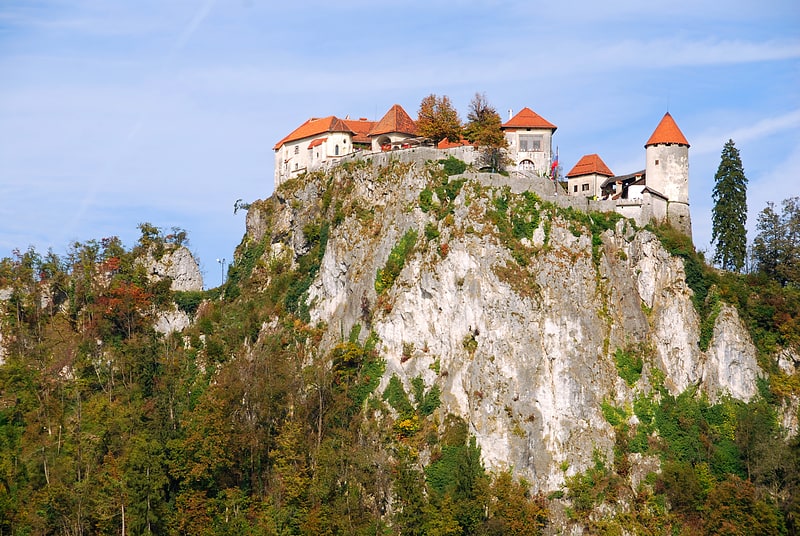
Also known as: Blejski grad
Fairytale castle on lakeside and museum. Bled Castle is a medieval castle built on a precipice above the city of Bled in Slovenia, overlooking Lake Bled. According to written sources, it is the oldest Slovenian castle and is currently one of the most visited tourist attractions in Slovenia. Nowadays, the castle is employed as a historical museum with a collection that represents the lake's history.[2]
Address: Grajska cesta 61, 4260 Bled
Ljubljana Cathedral, Ljubljana

Also known as: Stolnica svetega Nikolaja, Ljubljana
Cathedral with baroque architecture. Ljubljana Cathedral, officially named Saint Nicholas's Church, also named Saint Nicholas's Cathedral, the Cathedral of Saint Nicholas, or simply the Cathedral, is a cathedral in Ljubljana, the capital of Slovenia. Originally, Ljubljana Cathedral was a Gothic church. In the early 18th century, it was replaced by a Baroque building. It is an easily recognizable landmark of the city with its green dome and twin towers and stands at Cyril and Methodius Square by the nearby Ljubljana Central Market and Town Hall.[3]
Address: Dolničarjeva ulica 1, 1000 Ljubljana
Triple Bridge, Ljubljana
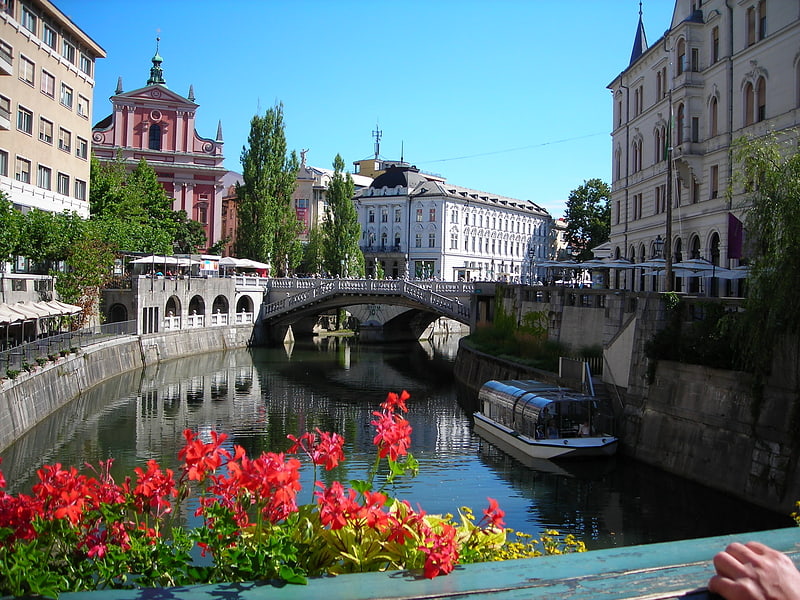
Also known as: Tromostovje
Arch bridge in Ljubljana, Slovenia. The Triple Bridge is a group of three bridges across the Ljubljanica River. It connects Ljubljana's historical medieval town on one bank and the modern city of Ljubljana, the capital of Slovenia, on the other.[4]
Address: River Ljubljanica from Presernov trg to the Old Town, 1000 Ljubljana
Vintgar Gorge, Triglav National Park

Also known as: Blejski vintgar
Scenic walkway along a historic gorge. The Vintgar Gorge or Bled Gorge is a 1.6-kilometer gorge in northwestern Slovenia in the municipalities of Gorje and Bled, four kilometers northwest of Bled. Carved by the Radovna River, it is the continuation of the Radovna Valley. The sheer canyon walls are 50 to 100 meters high, with a total slope measuring about 250 m. The stream has created many erosive features such as pools and rapids, and terminates in the picturesque 13 m Šum Falls, the largest river waterfall in Slovenia.[5]
Address: Podhom 80, 4247 Zgornje Gorje
Mariborsko Pohorje, Maribor

Ski resort in Maribor, Slovenia. Maribor Pohorje Ski Resort is the largest ski resort in Slovenia, located just south of Maribor, at the mountain range of Pohorje in Lower Styria.
The resort consists of three sections: lower section "Snow Stadium," middle section "Bolfenk" and an upper section called "Areh". The resort as a whole offers 42 km (26 miles) of north-facing ski slopes, 27 km (17 mi) of cross-country skiing, and 10 km (6 mi) of night skiing. It is best known for its "Golden Fox" competition, women's World Cup races in giant slalom and slalom, held since 1964.[6]
Address: Pohorska ulica 60, 2000 Maribor
Cerkev Sv. Jurija, Piran
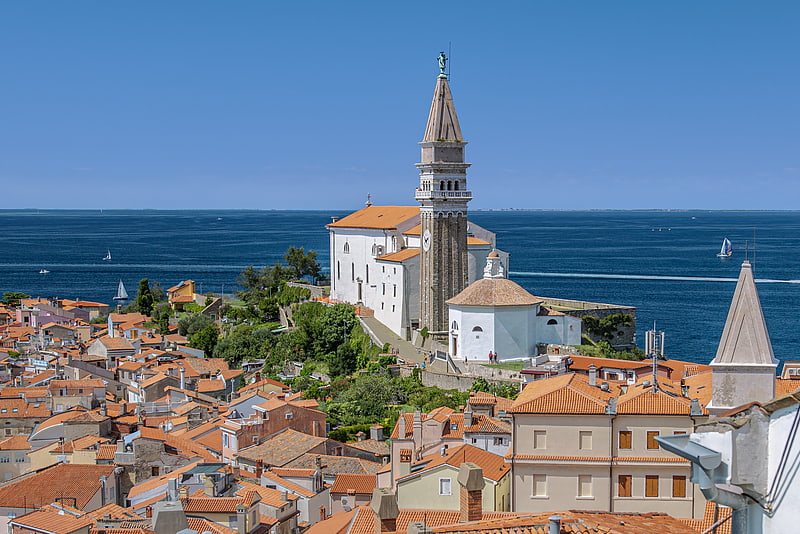
Also known as: Cerkev sv. Jurija, Piran
Picturesque church with a clock tower. St. George's Parish Church in Piran is a Roman Catholic church located on the hill above Piran, a port town on the coast of the Adriatic Sea in southwestern Slovenia. It was built in the Venetian Renaissance architectural style and has been dedicated to Saint George. It was the life work of the stonemason Bonfante Torre from Venice.[7]
Address: Via Primož Trubar 18a, 6330 Piran - Pirano
Praetorian Palace, Koper

Also known as: Pretorska palača
1400s Venetian Gothic–style palace. The Praetorian Palace is a 15th-century Venetian Gothic palace in the city of Koper, in southwest Slovenia. Located on the southern side of the city's central Tito Square, it houses the Koper city government and a wedding hall. It is considered one of the city's architectural landmarks.[8]
Address: Titov trg 3, 6000 Koper
Lake Bohinj, Triglav National Park
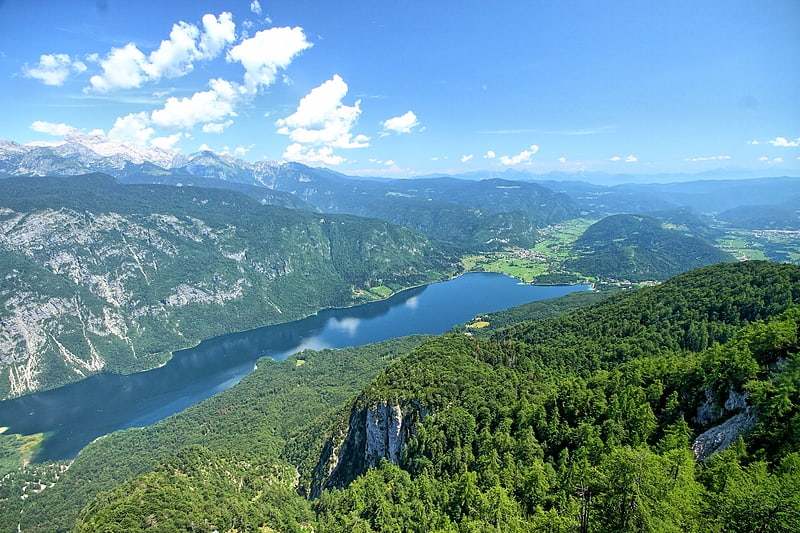
Also known as: Bohinjsko jezero
Large lake reflecting mountains. Lake Bohinj, covering 318 hectares, is the largest permanent lake in Slovenia. It is located within the Bohinj Valley of the Julian Alps, in the northwestern Upper Carniola region, and part of Triglav National Park.[9]
Bled, Bled
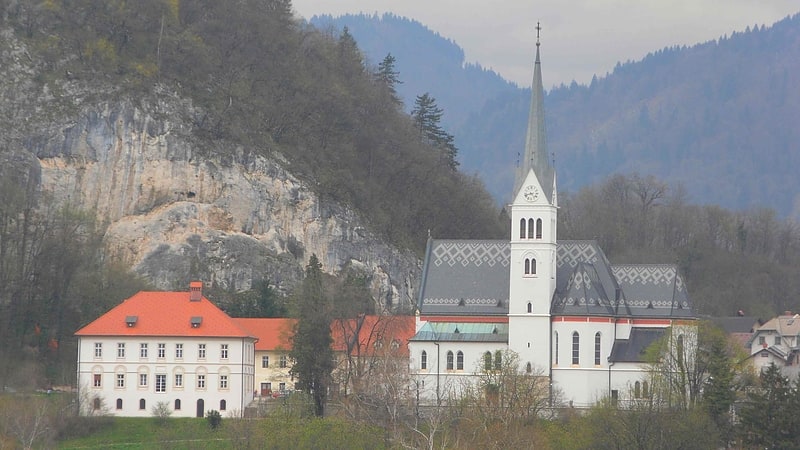
St. Martin's Parish Church in Bled is the parish church of the Parish of Bled.[10]
Address: Riklijeva Cesta 26, Bled
Tartini Square, Piran
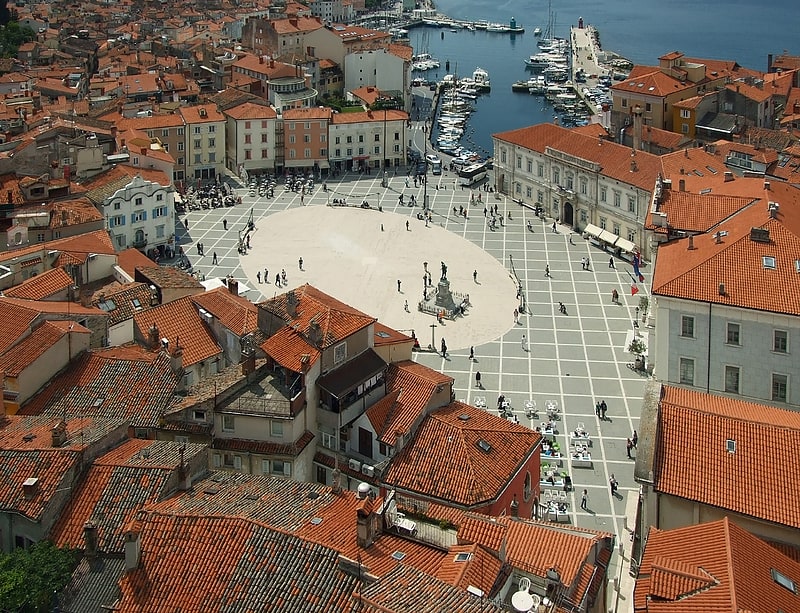
Also known as: Tartinijev trg
City square surrounded by eateries. Tartini Square is the largest and main square in the town of Piran, Slovenia. It was named after violinist and composer Giuseppe Tartini, of whom a monument was made in 1896.[11]
Address: Kidričevo nabrežje 6, Piran
Kluže Fortress, Triglav National Park
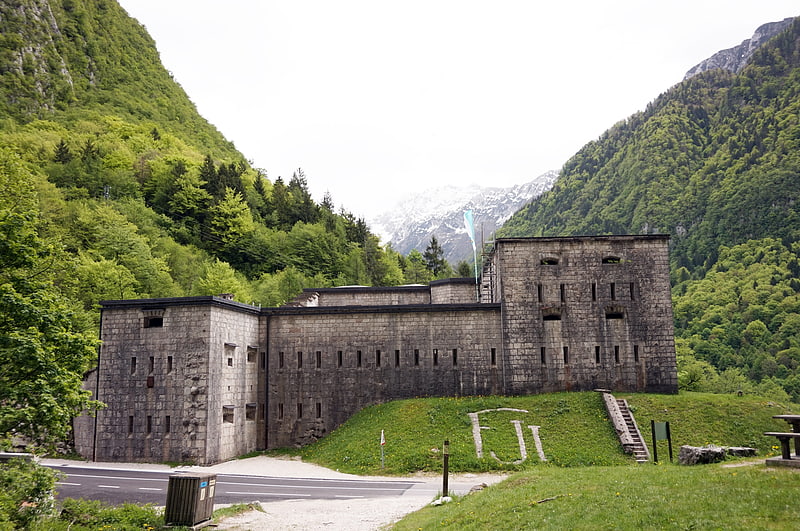
Also known as: Trdnjava Bovške Kluže
Fortress in Bovec, Slovenia. The Kluže Fortress is a fort near the town of Bovec in northwestern Slovenia.
The original fortress was built in 1472 near Bovec on the road between Cave del Predil and Carinthia. Its likely original purpose was defence of Friuli against the Turks. In the course of the 16th century Bovec came under Austrian authority as a result of the wars between Venice and the Habsburgs. However, for the time being it remained as an ecclesiastical dependence of Cividale and Aquileia. At the end of the 18th century it was entirely under Austria's administration, and remained so until 1918.
In 1796 and 1797 fighting took place around the fort, as Napoleon's army pushed through the Koritnica gorge. Napoleon's forces took the fort in 1797 by placing artillery at a higher elevation (where Fort Hermann now stands). The fortress was then destroyed. The current fort was built upon the site by the Austrians in the late 19th century. Fort Hermann, covering the higher elevation, was built at the same time. The two are linked by a trail and a tunnel. Fort Hermann was heavily damaged and rendered unusable by Italian artillery bombardment in 1915.
In 1903 part of Bovec was destroyed by a fire. What remained standing was ravaged in World War I, when the Italian-Austrian front (Battles of the Isonzo) crossed through the valley as the battle cut from north to south.[12]
Ptuj Castle, Ptuj
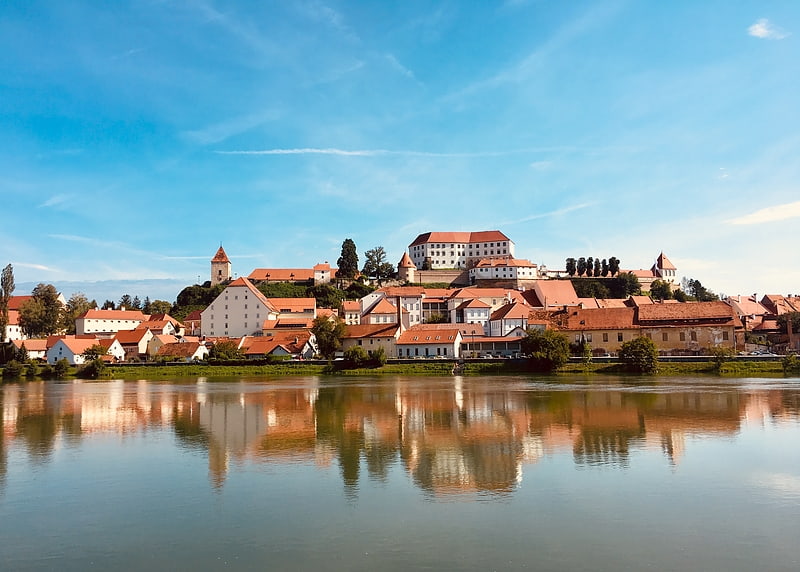
Also known as: Grad Ptuj
Museum in Ptuj, Slovenia. Ptuj Castle is a castle in Ptuj, Slovenia. It stands on a hill alongside the Drava River overlooking the town, and it is a prominent landmark.[13]
Address: Na Gradu 1, 2250 Ptuj
Stadion Ljudski vrt, Maribor
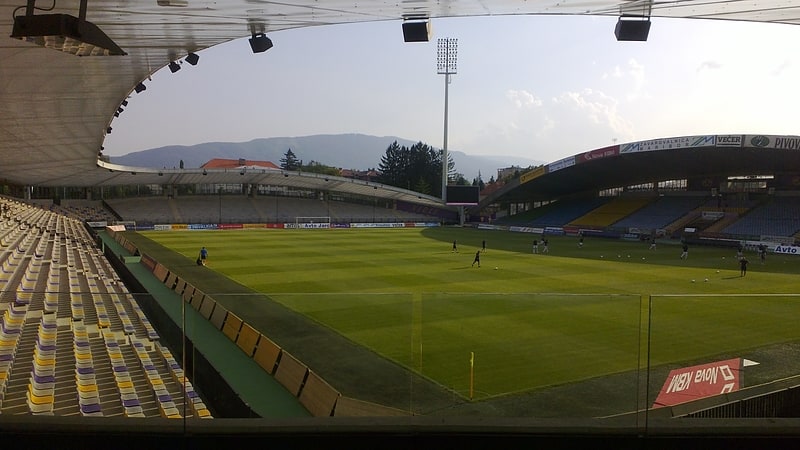
Stadium in Maribor, Slovenia. Ljudski vrt is a football stadium in Maribor, Slovenia, which has a seating capacity of 11,671. It has been the home of NK Maribor since their formation in 1960, with the exception of a short period in early 1961. It was originally the home of several other football teams based in Maribor, including Rapid and Branik. A notable feature of the stadium is the main grandstand with a concrete arch, which is protected by the Institute for the Protection of Cultural Heritage of Slovenia as an architectural and historical landmark.
The stadium has four stands: South, East, North, and West. The record attendance of 20,000 was set at a match between Maribor and Proleter in 1973, which was before the ground's conversion to an all-seater stadium in 1998. In addition to being the home of Maribor, the stadium is also occasionally used by the Slovenia national football team. Ljudski vrt was also one of the venues of the 2012 UEFA European Under-17 Championship and the 2021 UEFA European Under-21 Championship.
Since its opening in 1952, the stadium has gone through various renovations and reconstructions. In 1994 the stadium received floodlights, and the wooden benches on the grandstand were replaced by plastic seats. In 1999, when Maribor qualified for the UEFA Champions League group stages for the first time, the stadium underwent further renovations and adjustments. However, the biggest renovation took place between 2006 and 2008, when three of the four stands (South, East and North) were demolished and completely rebuilt. The West Stand was renovated between 2020 and 2021.[14]
Address: Mladinska ulica 29, 2000 Maribor
Walls of Piran, Piran
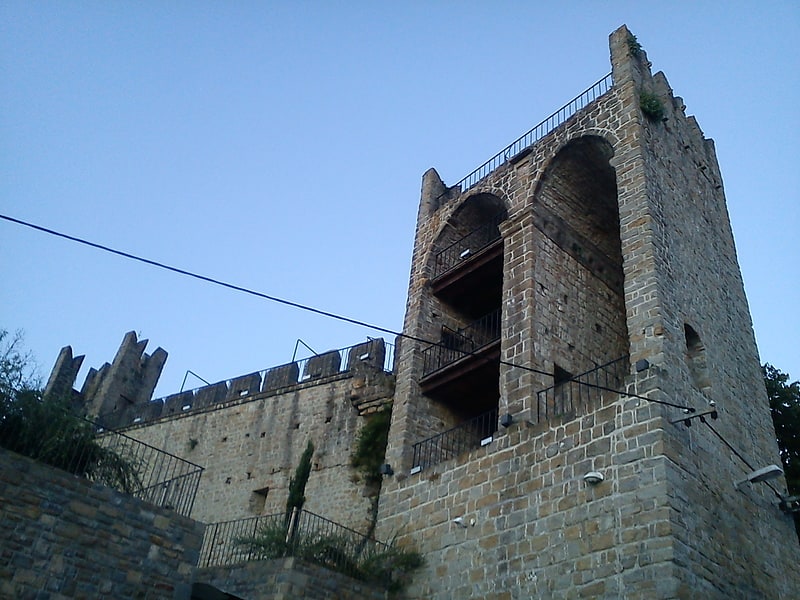
Also known as: Piransko obzidje
Historical landmark in Piran, Slovenia. The Walls of Piran are the city walls of Piran, a coastal town on the Adriatic Sea in southwestern Slovenia. Significant parts of the fortification walls remain well-preserved.[15]
Cathedral, Maribor
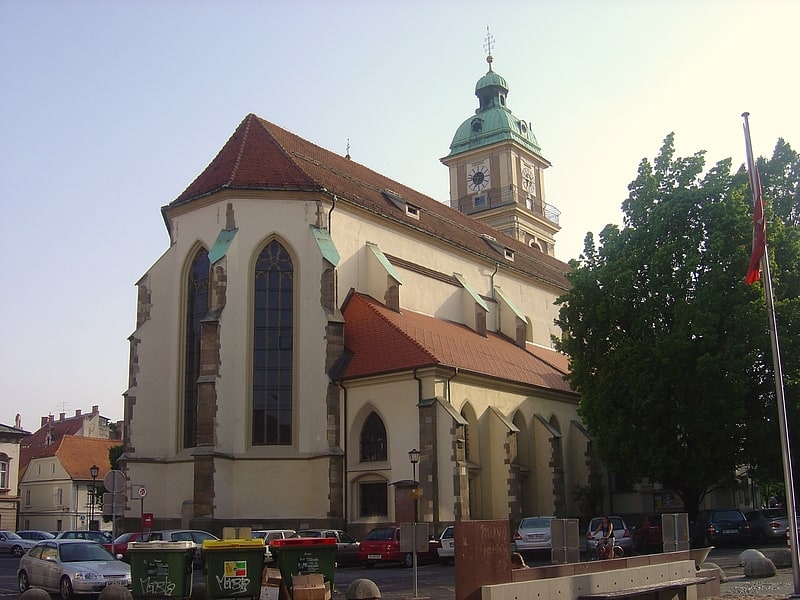
Also known as: Stolnica svetega Janeza Krstnika, Maribor
Unique cathedral with a bell tower. Maribor Cathedral, dedicated to Saint John the Baptist, is a Roman Catholic cathedral in the city of Maribor, northeastern Slovenia. The church is the seat of the Roman Catholic Archdiocese of Maribor and the parish church of the Parish of Maribor–St. John the Baptist. It is also the resting place of the Bishop Anton Martin Slomšek, an advocate of Slovene culture.[16]
Address: Slomškov trg 20, 2000 Maribor
Celje Castle, Celje
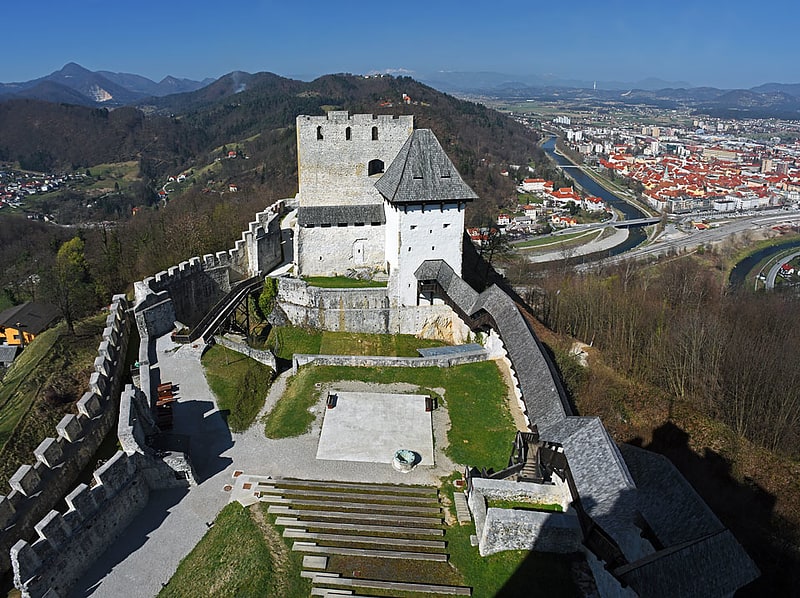
Also known as: Celjski grad
Castle in Celje, Slovenia. Celje Castle is a castle ruin in Celje, Slovenia, formerly the seat of the Counts of Celje. It stands on three hills to the southeast of Celje, where the river Savinja meanders into the Laško valley. Today, the castle is in the process of being restored. It was once the largest fortification on Slovenian territory.[17]
Address: Cesta na Grad 78, 3000 Celje
Church of the Assumption, Bled
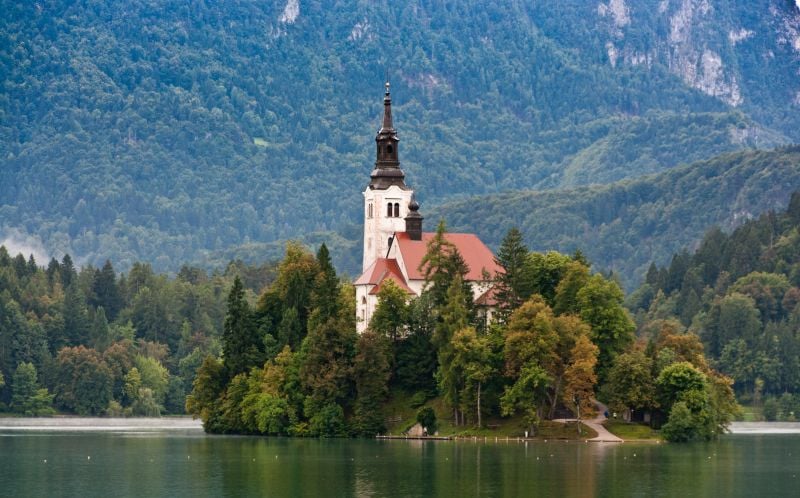
Sacred and religious sites, Church
Address: Bled Island, Bled
Celje Hall, Celje
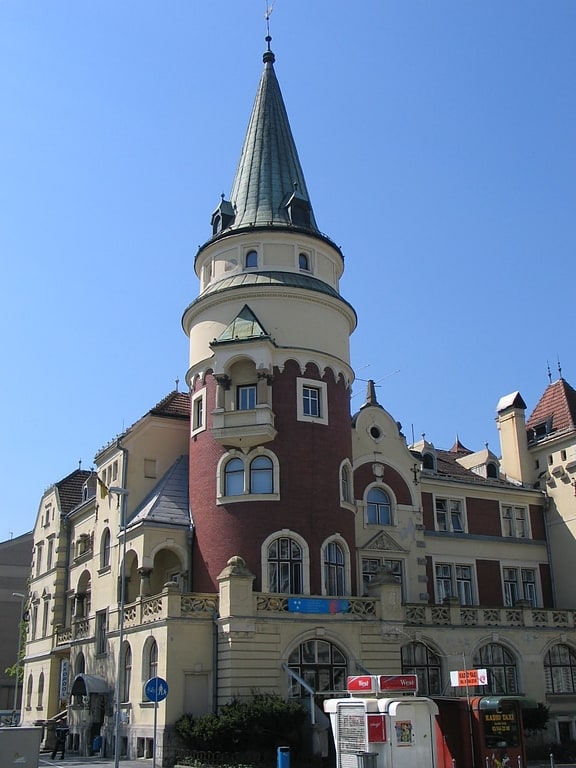
Also known as: Celjski dom
Event venue in Celje, Slovenia. Celje Hall is a community center in Celje, a town in central-eastern Slovenia. Today it hosts several cultural associations and the town's tourist information centre, and is a venue for concerts and theatre.[18]
Address: 9 Krekov trg, Celje
Celje Cathedral, Celje
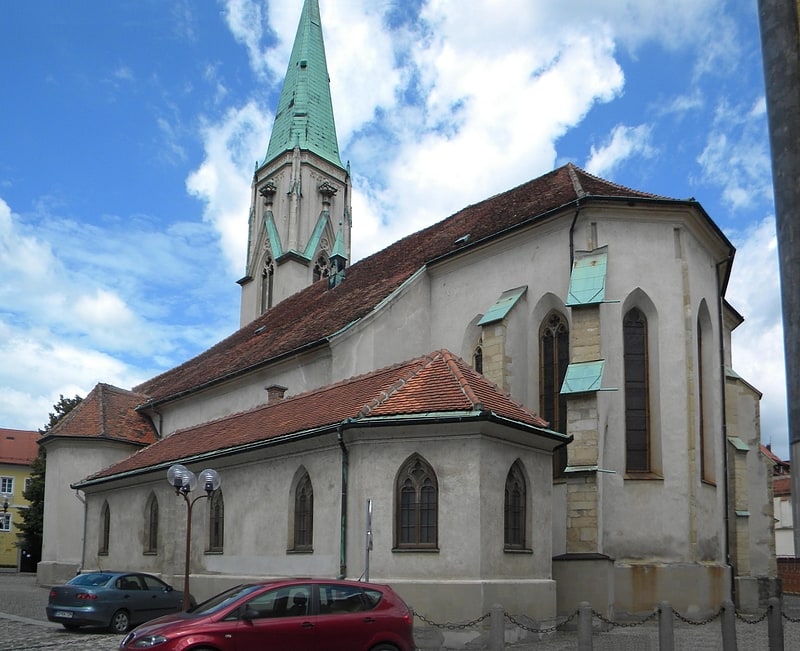
Also known as: Stolnica sv. Danijela, Celje
Cathedral in Celje, Slovenia. Celje Cathedral is a Roman Catholic cathedral dedicated to the Prophet Daniel in Celje, Slovenia. It has been the episcopal seat of the diocese of Celje since the creation of the diocese in 2006.[19]
Address: Slomškov trg 2, 3000 Celje
Terme Ptuj, Ptuj
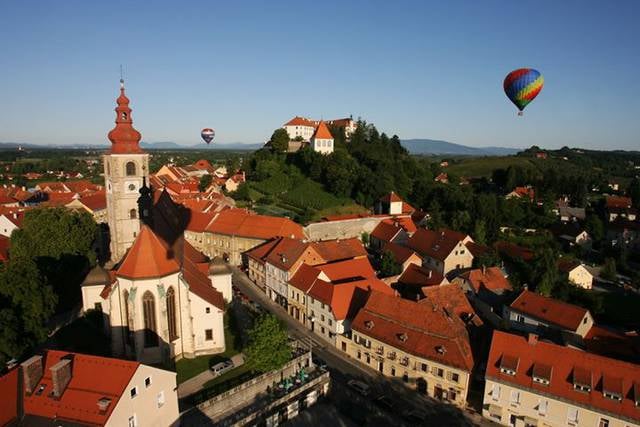
Watersports, Historical place, Spa, Water park, Amusement park, Swimming
Address: Pot v toplice 9, 2250 Ptuj
Assumption Cathedral, Koper
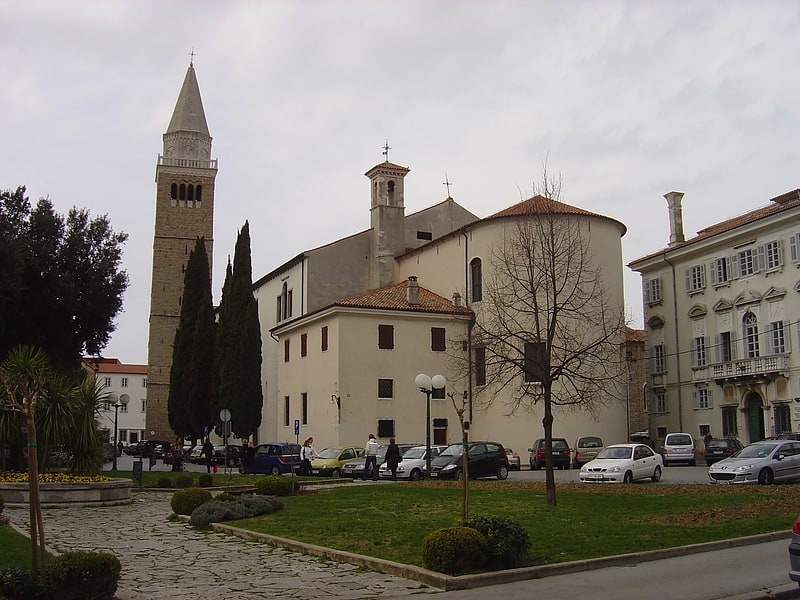
Also known as: Stolnica Marijinega vnebovzetja, Koper
Cathedral in Koper, Slovenia. The Cathedral of the Assumption of the Blessed Virgin Mary also called Koper Cathedral is the Catholic cathedral of the Diocese of Koper, in the city of Koper, Slovenia.
The church was built in the second half of the twelfth century in Romanesque style, with three naves, each ending with an apse. Until 1392 the church underwent changes and additions, which also led to a change of style: the western facade is clearly Gothic. After an earthquake in 1460, the facade was redesigned in 1488, with the addition of Renaissance elements. The tower, which offers views of the city and the bay, is four stories, follows the style of an Italian bell tower and houses one of the oldest bells in Slovenia, dating back to 1333. Early 18th century, Koper was under Venetian influence, and was again an architectural transformation in the Baroque style. Under the direction of Giorgio Massari, additional landscaping elements were added to the church, including valuable paintings of Venetian painters Pietro Liberi, Celesti Andrea, Antonio Zanchi and Vittore Carpaccio. The most important painting is the Holy Conversation of Vittore Carpaccio, dating from 1516.[20]
Koper Regional Museum, Koper

Museum in Koper, Slovenia. The Koper Regional Museum has been housed since 1954 in the spacious early 17th century Belgramoni Tacco Palace, and is responsible for the movable cultural heritage in Primorska region of Slovenia. The museum originated in 1911 as the Municipal Museum of History and Art. At its centenary in 2011, the museum opened a new permanent exhibition Between the Serenissima, Napoleon and the Habsburgs and enriched its collection.[21]
Address: Kidricheva ulica 19, 6000 Koper
St. George's Church, Ptuj
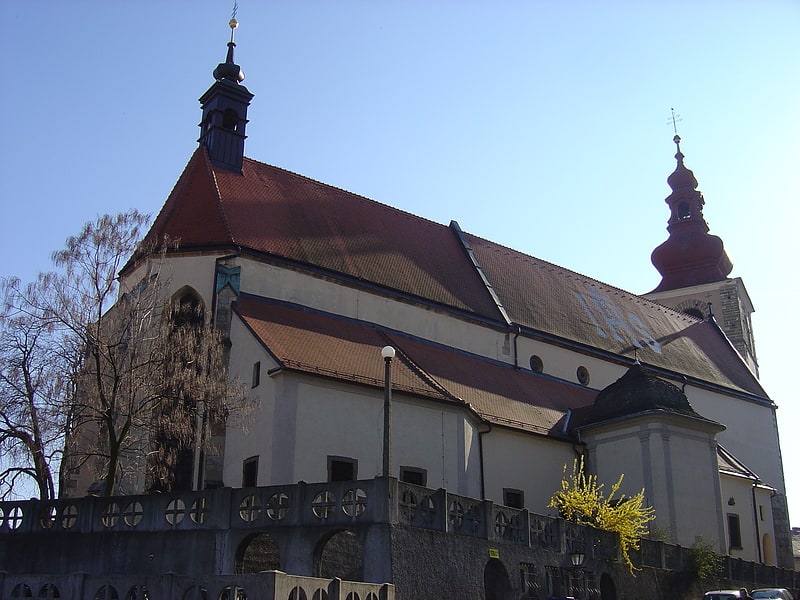
Also known as: Cerkev sv. Jurija, Ptuj
Parish church in Ptuj, Slovenia. St. George's Church is a parish church in Ptuj, northeastern Slovenia. It was built in the 12th century and in the 15th century redesigned in the Gothic style. Viewed from Slovene Square, it is located behind the monolithic Roman tombstone, the Monument of Orpheus, and the free standing Town Tower. There are Renaissance and Baroque gravestones on the exterior walls of the church. The paintings in the interior were made from the late 13th to the end of the 15th century. In 1863 the church became Provost.[22]
Address: Slovenski Trg, 2250 Ptuj
Kieselstein Castle, Kranj
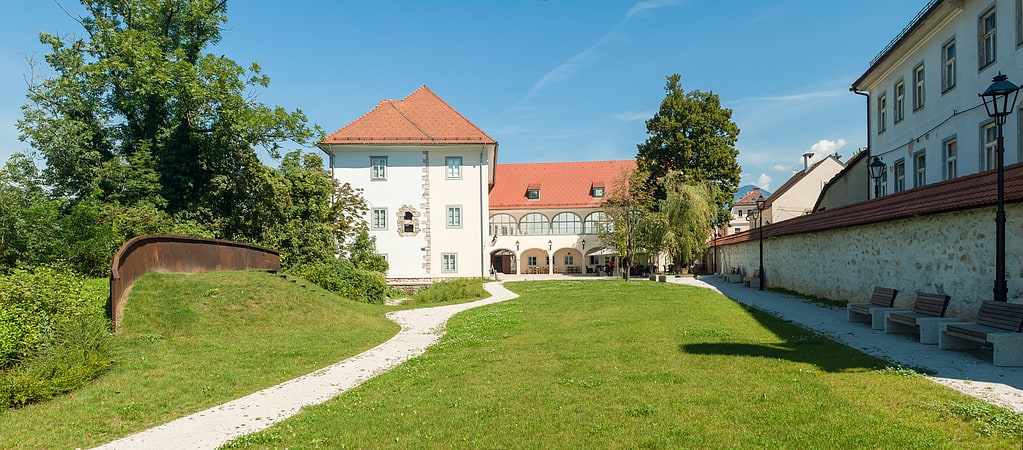
Also known as: Grad Kieselstein
Castle. Kieselstein Castle, also known as Khislstein, is a 13th-century castle in the city of Kranj, in the Upper Carniola region of Slovenia.
The castle stands at what was once a defensible point, guarding the city pier and crossing over the river Sava, and was predated on the site by a round 11th-century keep. The current structure was built in 1256 by the counts of Ortenburg, by an arrangement with the lord of Kranj, Ulrich III, Duke of Carinthia. Until 1420, the tower was managed by their ministeriales or vassals, the knights von Chreinburch; in that year, it passed to Count Hermann II of Celje. During the period of Turkish incursions, the tower was incorporated into the city walls. After the extinction of the Counts of Celje in 1456, it was inherited by the Habsburgs, who sold it in the mid 16th century to Baron Hans Khiessl. Khiessl successfully petitioned Emperor Ferdinand I for the right to rename the castle after himself, and also expanded the tower into an L-shaped castle, giving it its present appearance.
The Khiessls soon sold the castle to Franz von Moscon; later owners included the Ravbar, Apfaltrer, Auersperg and finally Natalis Pagliaruzzi noble families. In 1913 the castle was purchased by the state. Between the world wars, it housed government offices; after World War II it was (somewhat redundantly) nationalized. In 1952, the building was renovated according to plans drawn up by the architect Jože Plečnik.
Today the renovated building houses the Kranj Municipal Agency for the Protection of Natural and Cultural Heritage, as well as the Upper Carniola Museum.[23]
Address: Tomshicheva ulica 44, 4000 Kranj